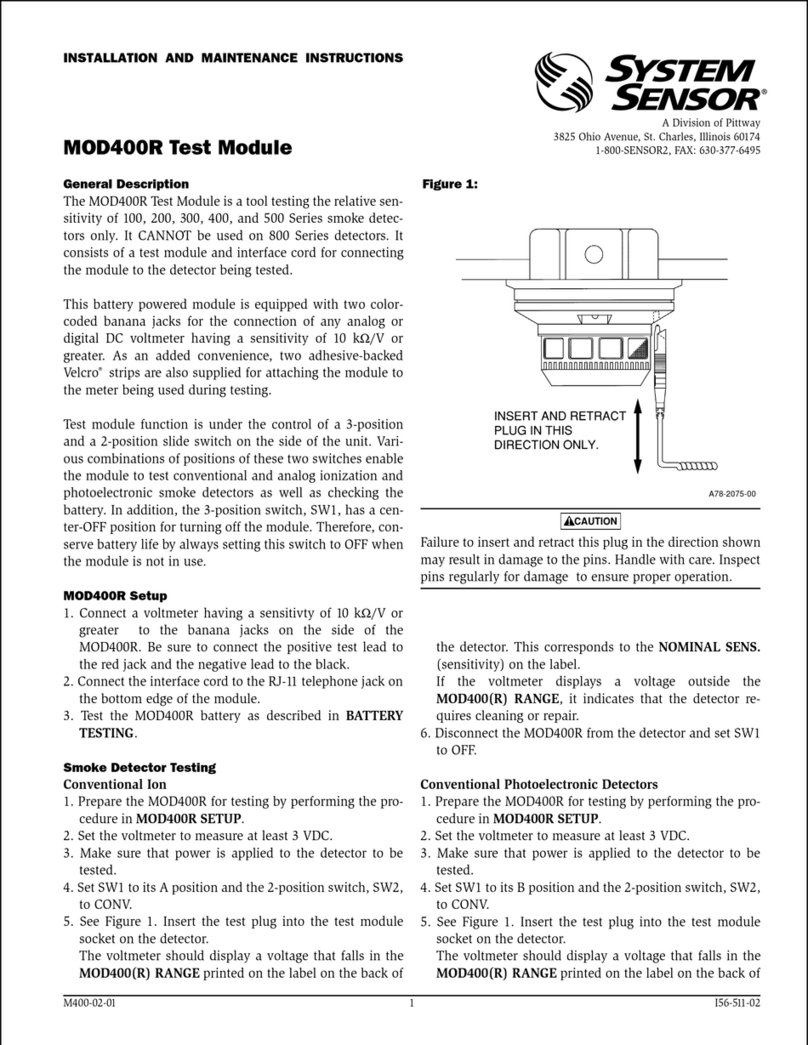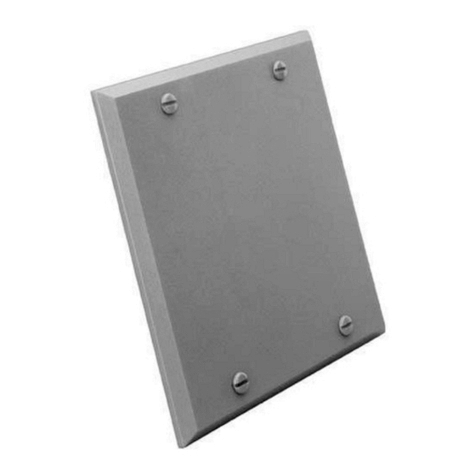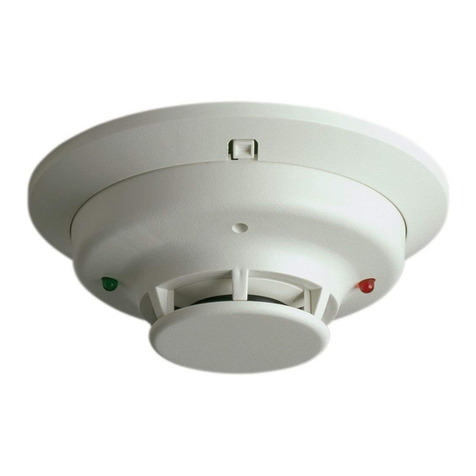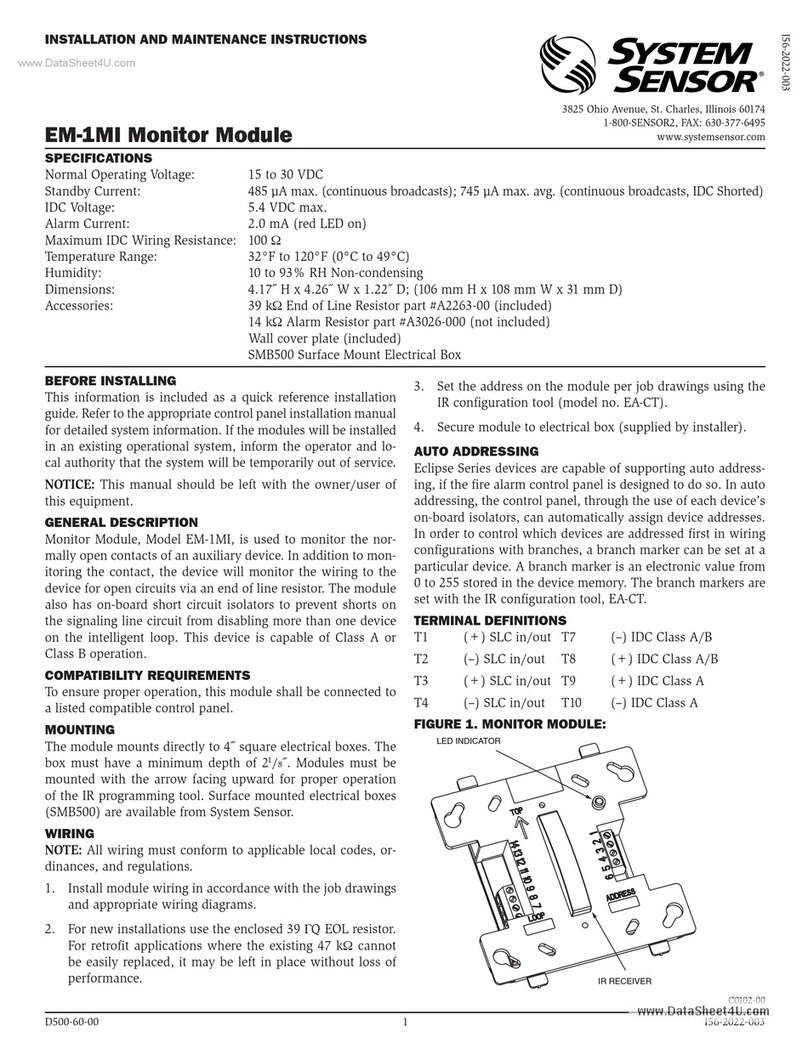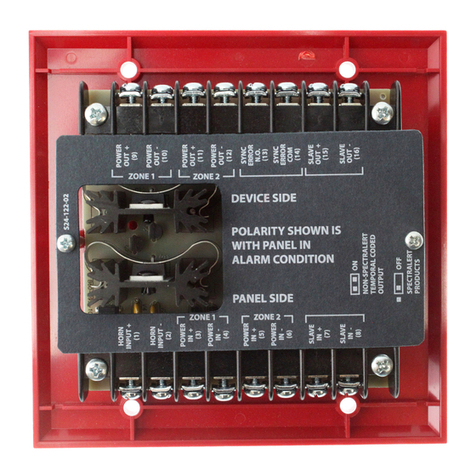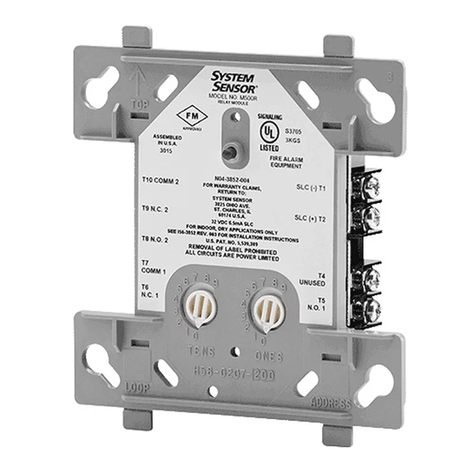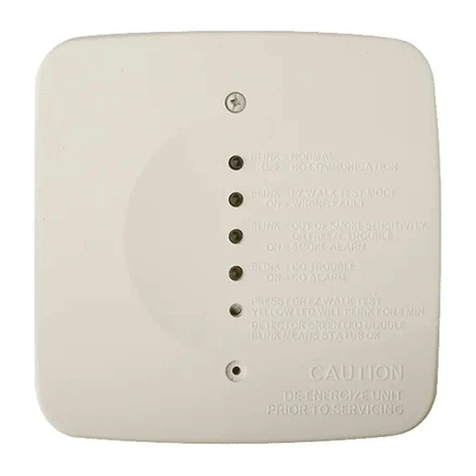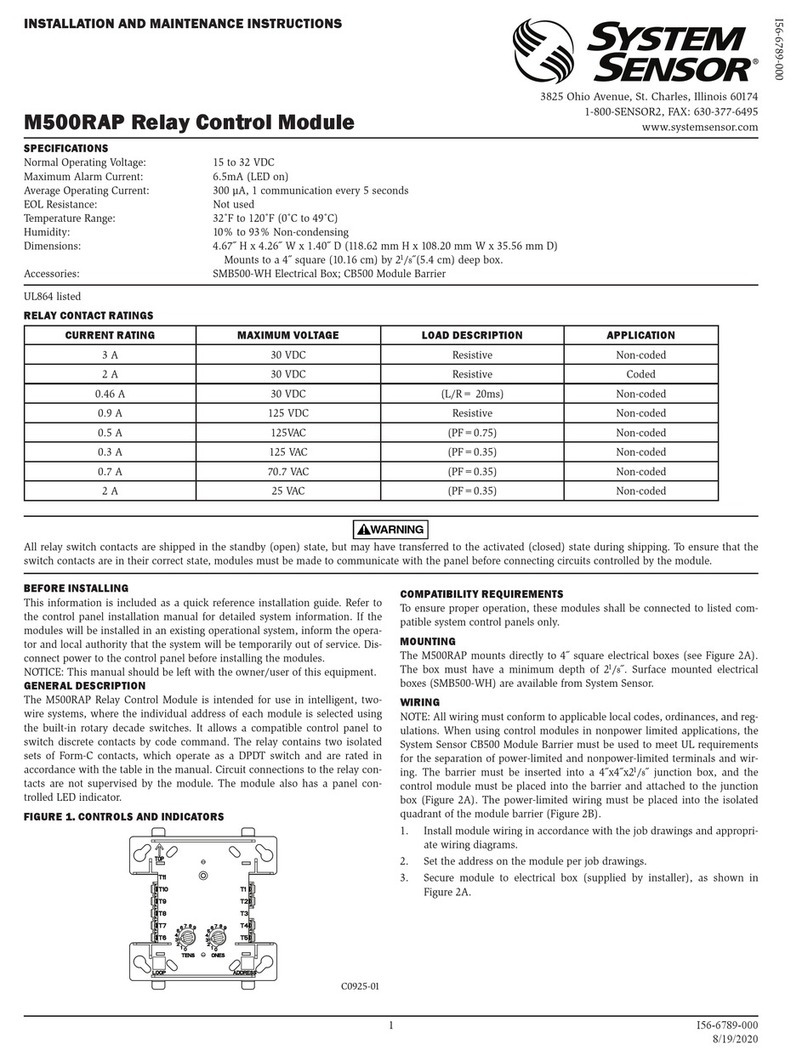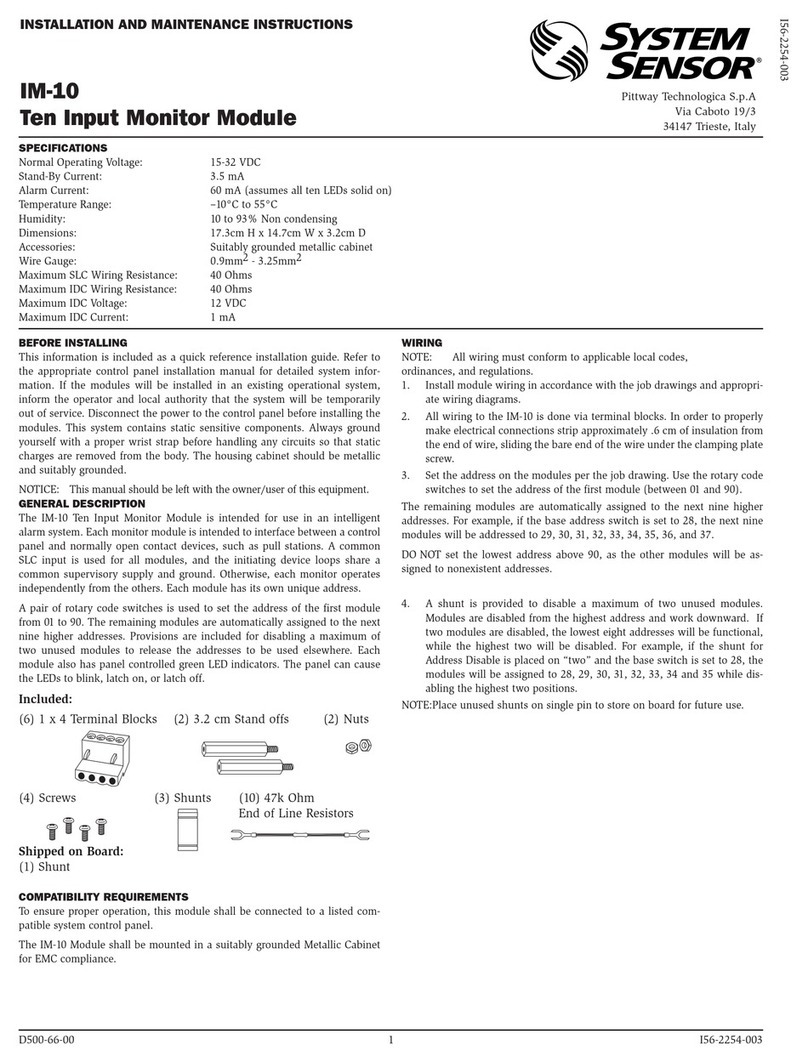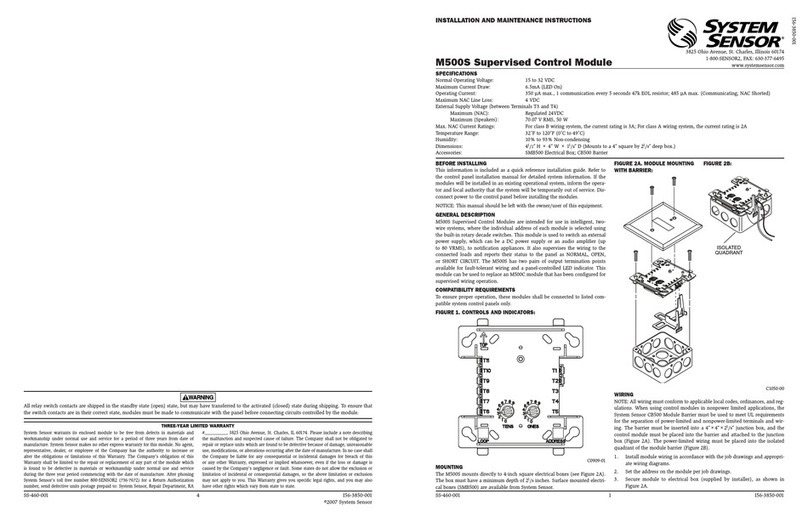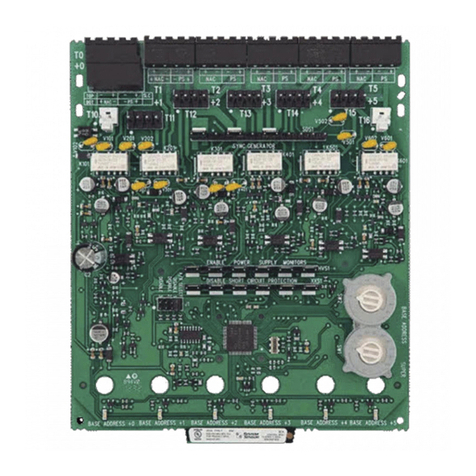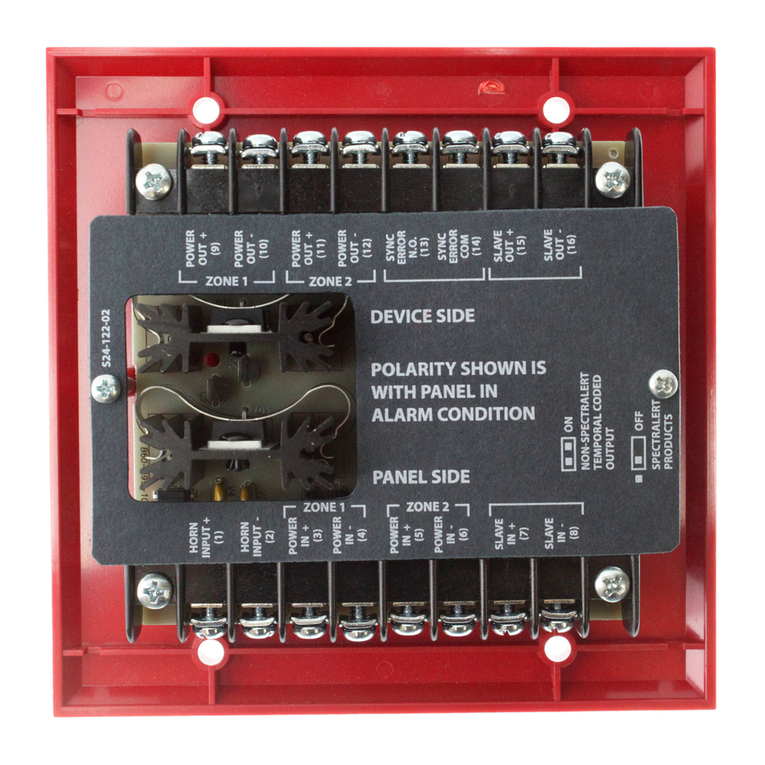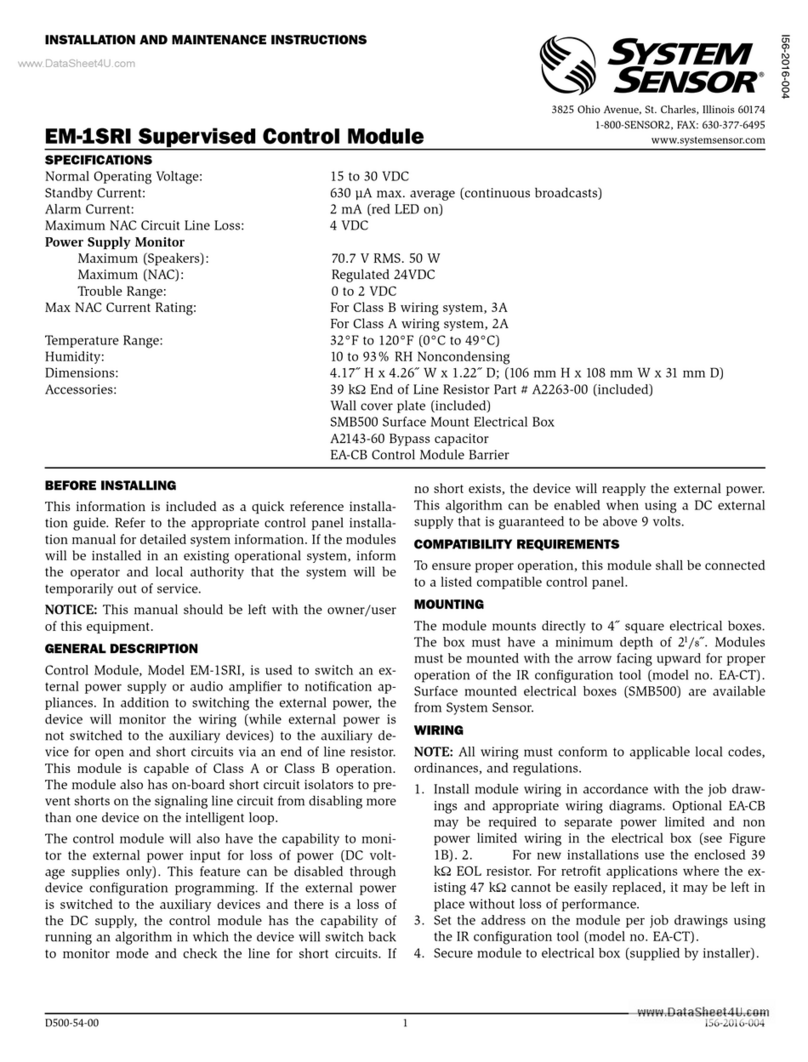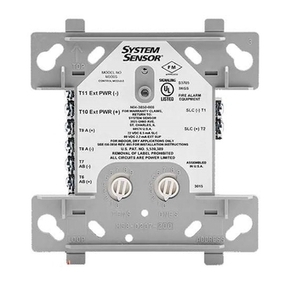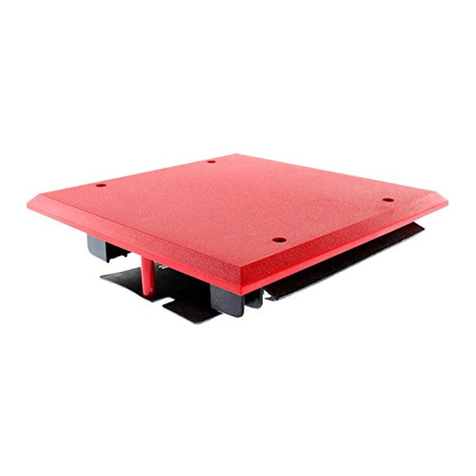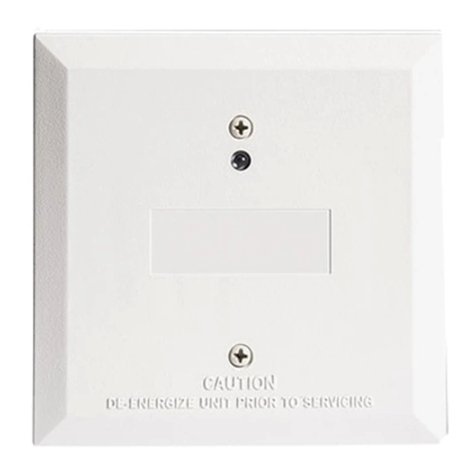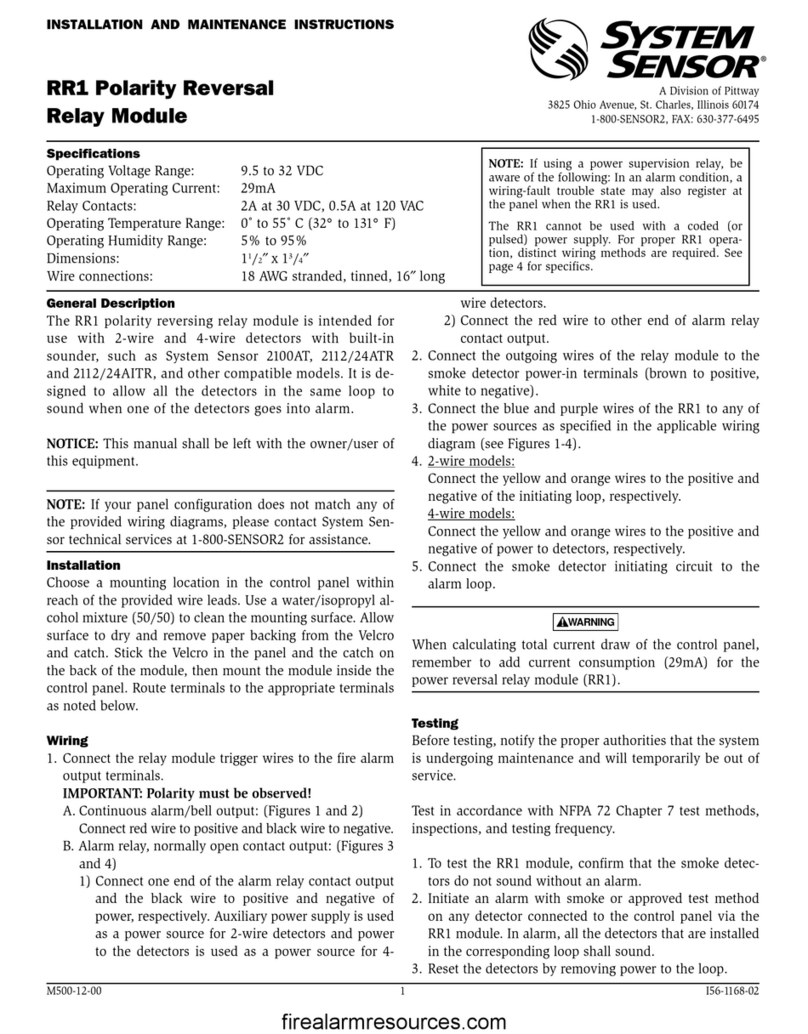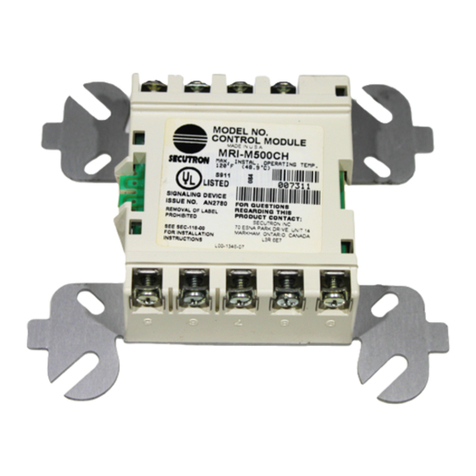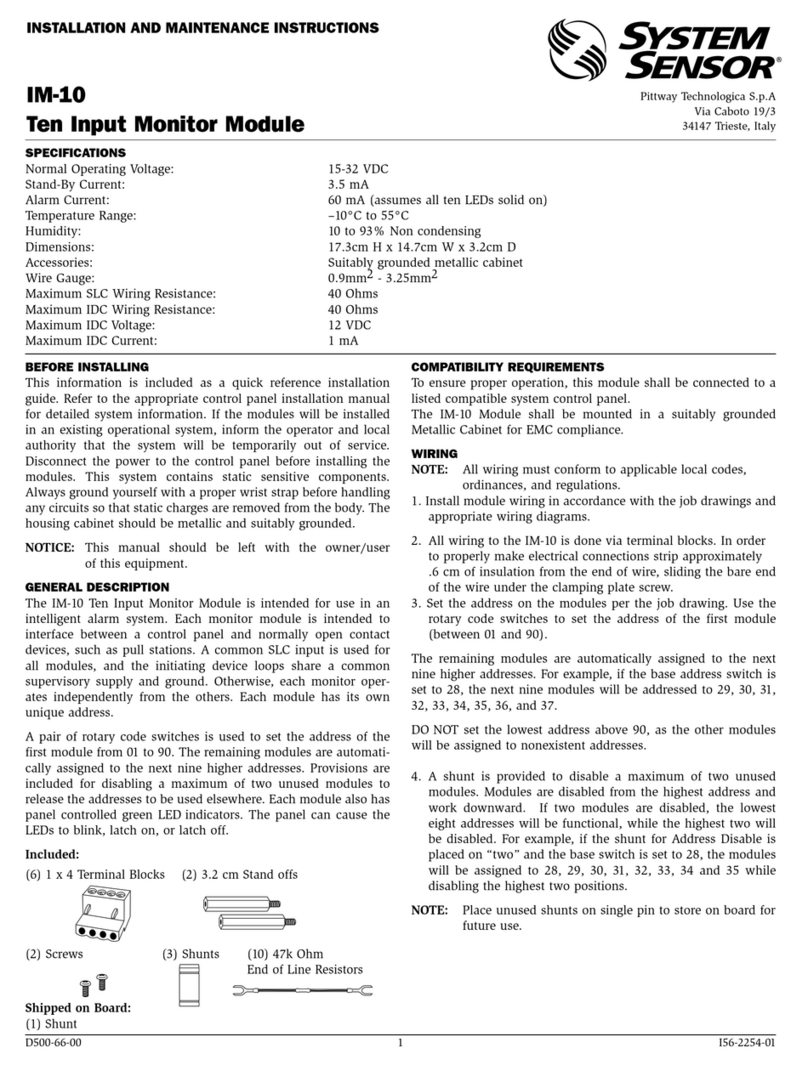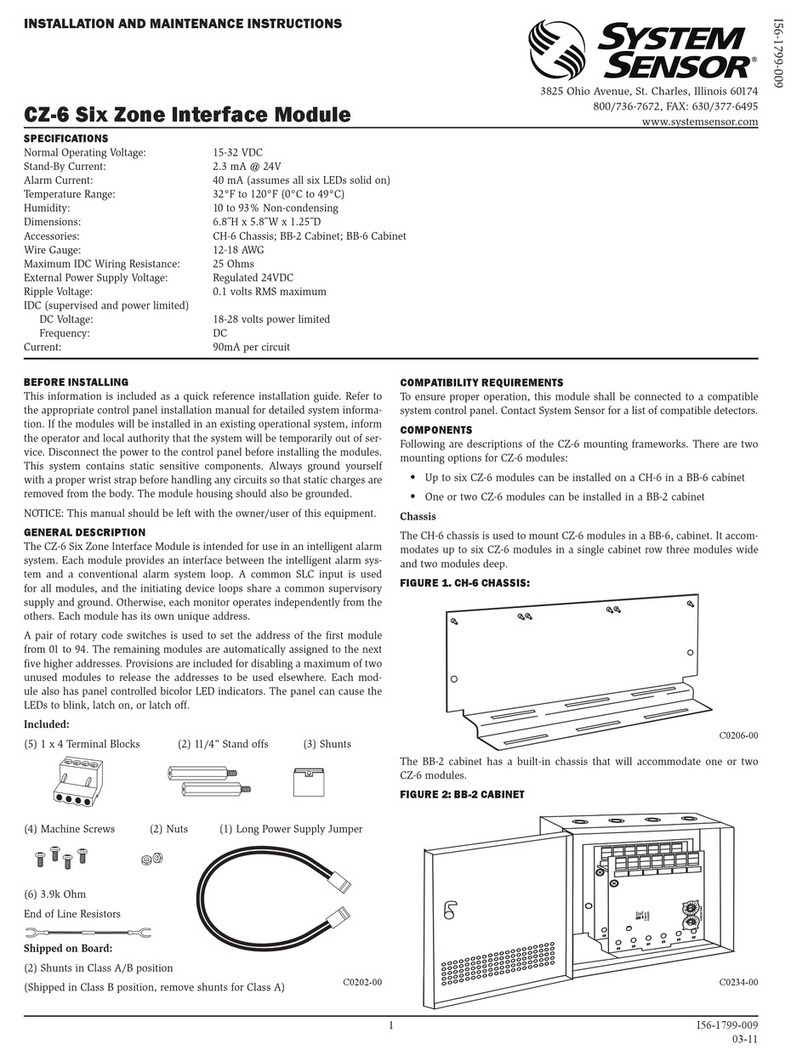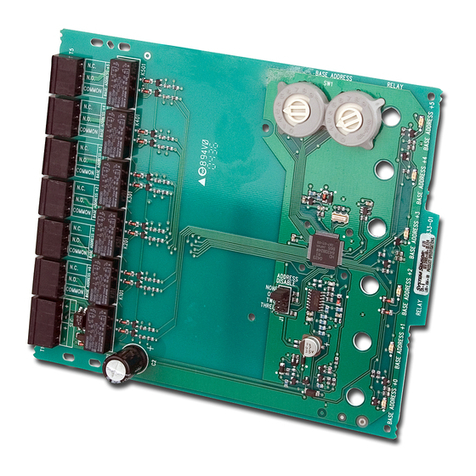
6. There is a power supply monitor that must be enabled to facilitate short
circuit protection (see Figure 7). The module is shipped with power sup-
ply monitoring enabled represented by six large shunts on the pins of the
“Enable Power Supply Monitor” area.
NOTE: Power supply monitoring should not be used for audio applica-
tions. The short circuit protection feature is also not available for audio
applications.
NOTE: The SC-6A does not provide ring back when used as a
firefighter telephone circuit.
NOTE: This feature is not for use with all Fire Alarm Control Panels. Please
consult with Technical Services before enabling this feature.
NOTE: Place unused shunts on single pin to store on board for future use.
NOTE: SLC wiring is the top terminal block, notification appli-
ance/power supply is the bottom.
NOTE: Power must not be applied to the unit when changing functionality of
the shunts.
NOTE: Whether in Class B or Class A wiring, power supply monitoring and
short circuit protection must be enabled on the NAC circuits that are sharing
a power supply.
NOTE: Short circuit protection can only be disabled if a power supply is not
being shared by multiple NACs.
WIRING NOTES
• Power-limited circuits must employ type FPL, FPLR, or FPLP cable as
required by CEC.
• For easier wiring, assign all power-limited wiring to one side of the en-
closure rather than alternating with non power-limited.
PROGRAMMING
The SC-6A module operates with the following Fire Alarm Control Panels:
• MS-9200
• MS-9600
NAC WIRING AND SUPERVISION
For Class B, Style Y applications (figures 8, 9, and 12 are typical): connect the
positive terminal of the notification appliance(s) to the NAC+ terminal and
the negative device terminal to the adjacent NAC- terminal. Connect one (for
each NAC) of the supplied EOL resistors across the NAC+ and NAC- wires, at
the ends farthest away from the NAC terminal of the SC-6.
For Class A, Style Z applications (figures 10, 11, and 13 are typical) wire the
NACs per table 2. The A/B select shunt must be removed prior to connect-
ing the SC-6A to the SLC. The EOL resistors should not be used. The SC-6 is
capable of supporting 3 Class A, Style Z NACs. The SC-6A will only respond
at the base address, base address +2, and base address +4 (assuming no ad-
dresses have been disabled).
TABLE 2.
NAC# (+) CONNECTIONS (–) CONNECTIONS
+0 +0 NAC+, +1 NAC+,
NOTIFICATION APPLIANCE+
+0 NAC–, +1 NAC–
NOTIFICATION APPLIANCE–
+2 +2 NAC+, +3 NAC+,
NOTIFICATION APPLIANCE+
+2 NAC–, +3 NAC–,
NOTIFICATION APPLIANCE–
+4 +4 NAC+, +5 NAC+,
NOTIFICATION APPLIANCE+
+4 NAC–, +5 NAC–
NOTIFICATION APPLIANCE–
POWER SUPPLY WIRING AND SUPERVISION
Table 3 gives an overview of how the power connectors, T0–T5 and T10–T15,
are interconnected by the circuit board (PCB). The external supply connection
points, at T0–T5, are marked by PS– and PS+ on the PCB legend. Pin 1 is
indicated by a dot next to T10–T16. The odd pins, on T10–T16, always con-
nect to PS– pins (e.g. PS–, of the +0 NAC, is connected to T10–1 and T11–1).
The even pins always connect to PS+ pins (e.g. PS+, of the +5 NAC, is con-
nected to T15-4 and T16-2).
TABLE 3.
PS OR NAC NUMBER
(TERMINAL / PINS)
TERMINAL / PINS
+0 (T0 – BOTTOM / PS- & PS+)* T10 / 1 & 2, T11 / 1 & 2
+1 (T1 / PS- & PS+) T11 / 3 & 4, T12 / 1 & 2
+2 (T2 / PS- & PS+) T12 / 3 & 4, T13 / 1 & 2
+3 (T3 / PS- & PS+) T13 / 3 & 4, T14 / 1 & 2
+4 (T4 / PS- & PS+) T14 / 3 & 4, T15 / 1 & 2
+5 (T5 / PS- & PS+) T15 / 3 & 4, T16 / 1 & 2
*Note: T0–TOP is reserved for SLC connections only (see Figure 8).
All power supplies, external to the cabinet (in which the SC-6A is housed),
should be connected to T0–T5 which are suitable connectors for field wiring.
The 1 x 4 terminal blocks, shown on page 1, should be used to make these
connections.
All NACs can be wired to be powered by separate external supplies (figures
8 and 10 are typical), or a single supply (figures 9 and 11 are typical) can be
shared among multiple NACs. If a supply is to be shared, between NACs wired
to a common PCB, use the short power supply jumpers shown on page 1. The
jumpers can be used on T11–T15. Refer to Table 4 for jumper functions. When
multiple (2 or more) NAC circuits share a power supply, the wiring for the
power supply must be in conduit and 20 feet or less from the SC-6A board.
TABLE 4.
JUMPER LOCATION NAC PAIR SHARING SUPPLY
T11* +0 and +1
T12 +1 and +2
T13* +2 and +3
T14 +3 and +4
T15* +4 and +5
*Note: Jumpers must be placed on T11, T13 and T15 for all Class A, Style
Z applications.
A supply can be wired to be shared among multiple PCBs in the same cabinet
(figure 14 is typical). To share among multiple PCBs: use the long power sup-
ply jumpers (shown on page 1) to connect either T10 or T16, of one PCB, to
either T10 or T16 of the other PCB.
An EOL relay must be used for every external power supply (figures 8–11 are
typical). The EOL relay coil should always be connected at the external power
supply input of the module which is connected to the ends of the wires which
are farthest from the power supply. The EOL relay contacts should always be
connected in series with the NAC wiring of the same module. The EOL relay
coil should be connected across the PS+ (red wire) and PS- (black wire) if
it is connected at T0 – T5. The EOL relay coil should be connected across
adjacent pins (red – even pin#, black – odd pin#), of the same connector, if
T10 – T16 are used. If the supply is an audio amplifier then the points, where
the EOL relay coil would normally be connected, should be connected to the
amplifier supervision EOL device (figures 12 and 13 are typical).
All wiring must be in accordance with the Canadian Electrical Code and all
other applicable codes and standards. All external power supplies must be
voltage regulated with battery back-up. All external power supplies, audio
amplifiers, EOL relays, and notification appliances must be ULC listed for fire
protection signaling applications.
4 I56-2188-001
7/30/2019
